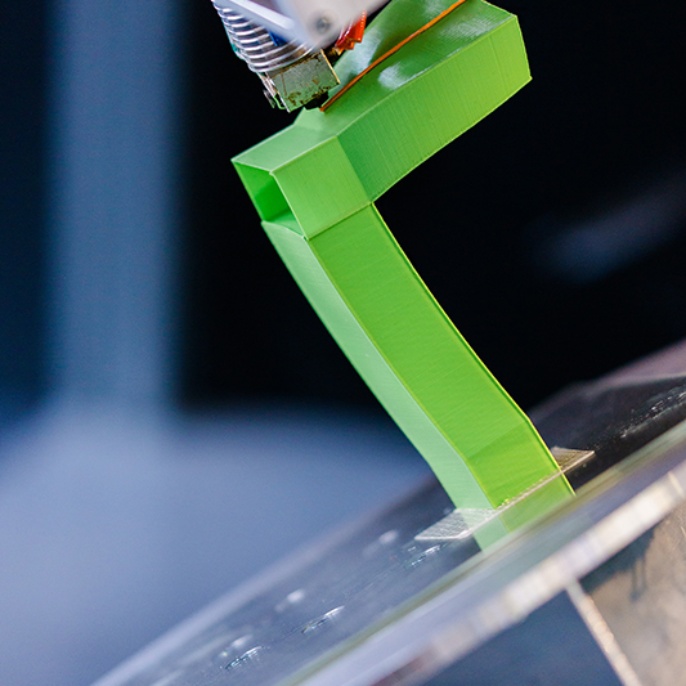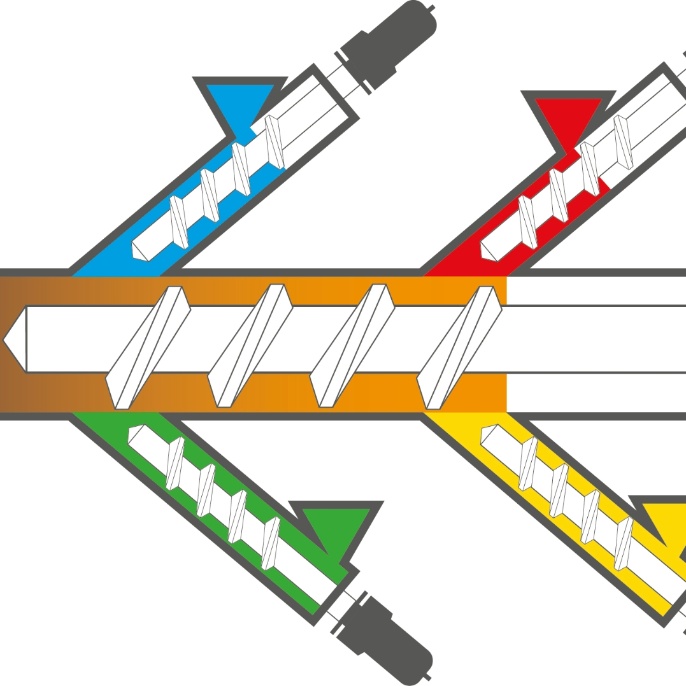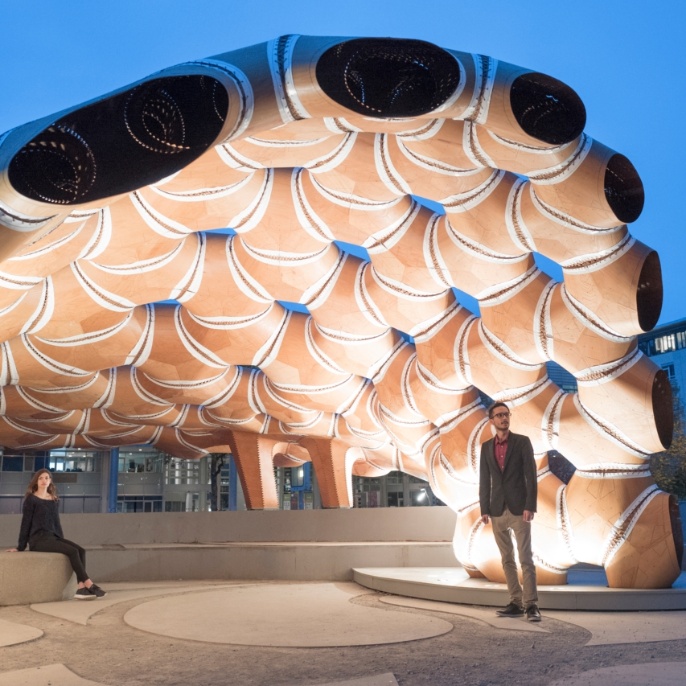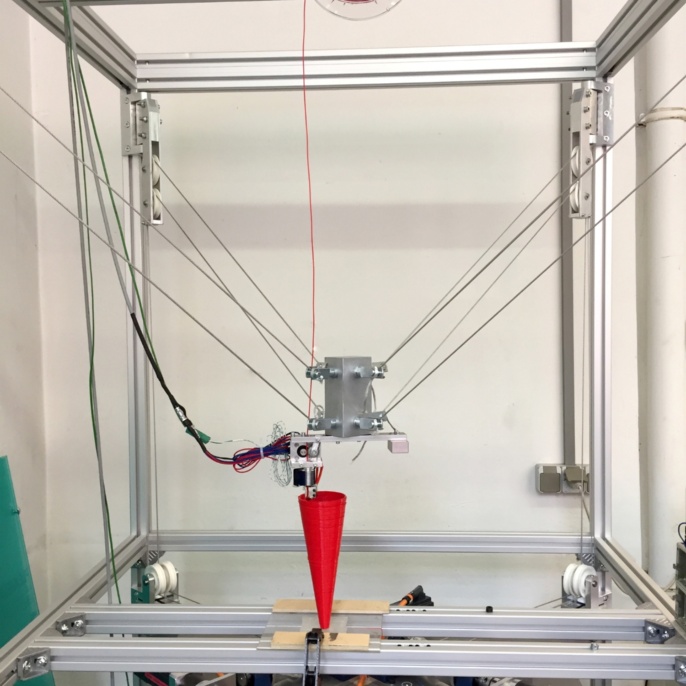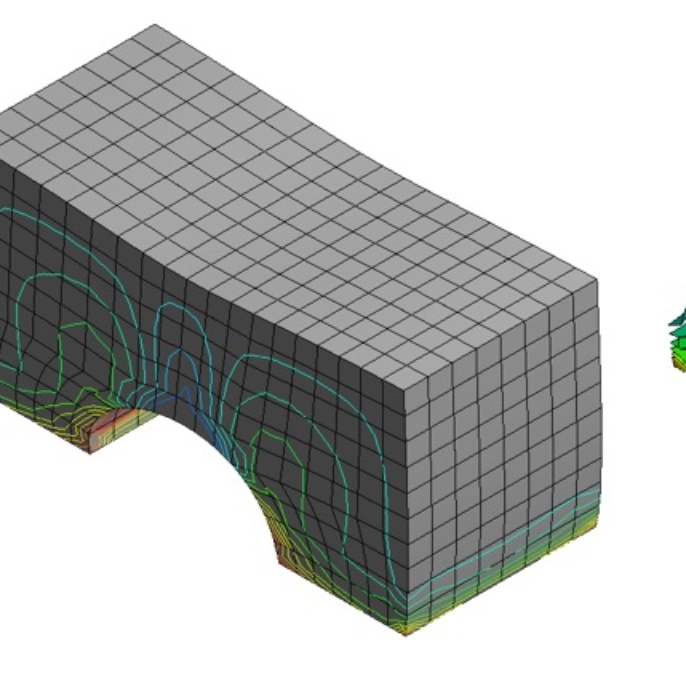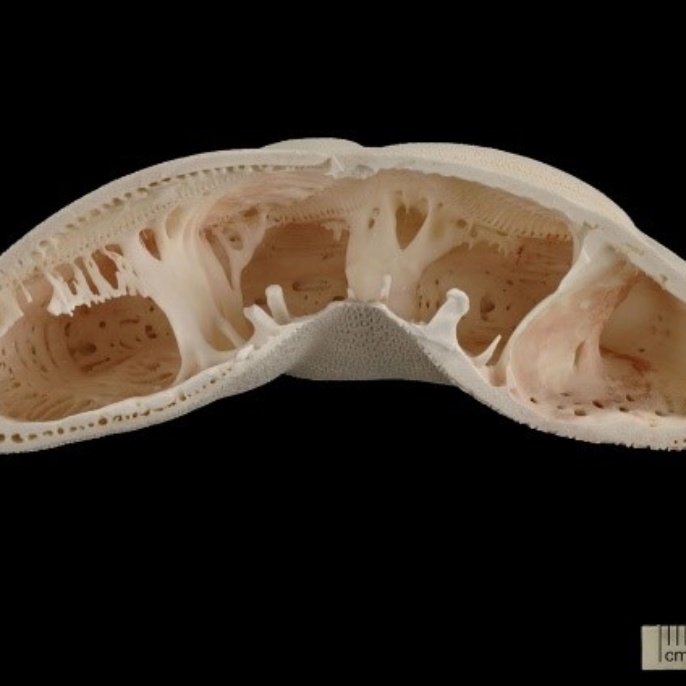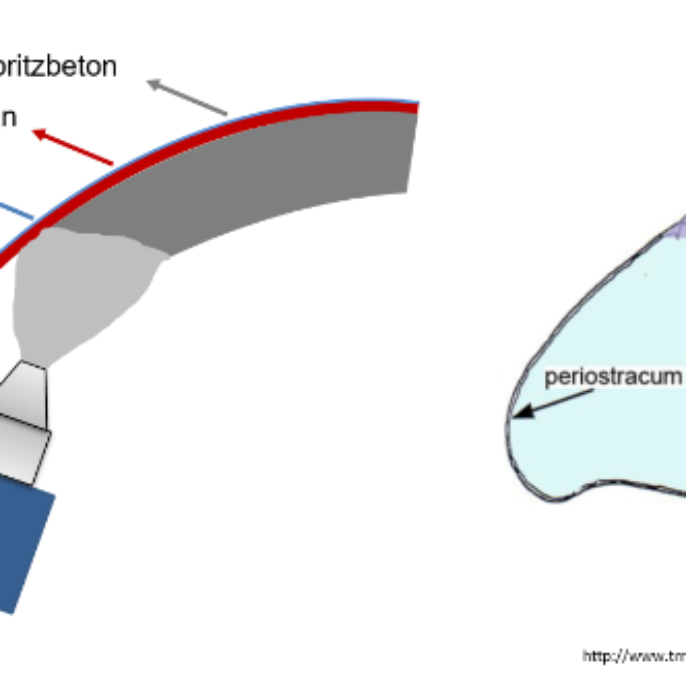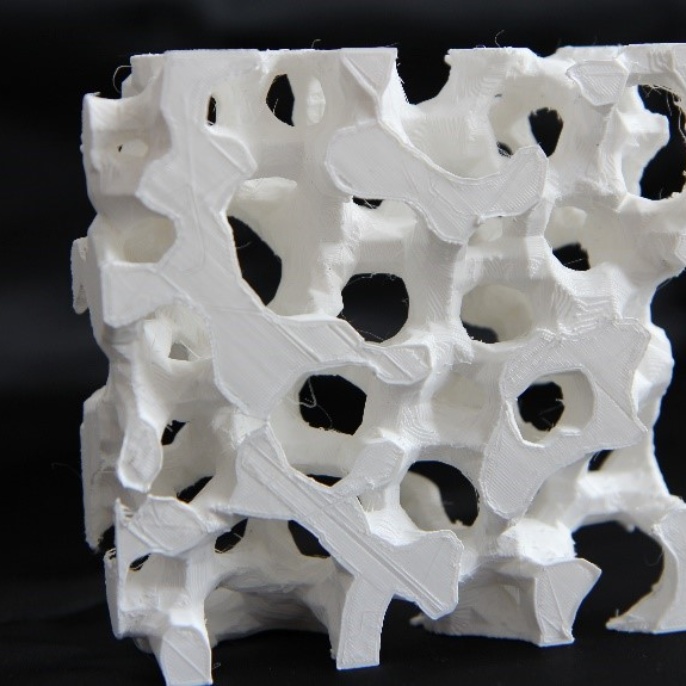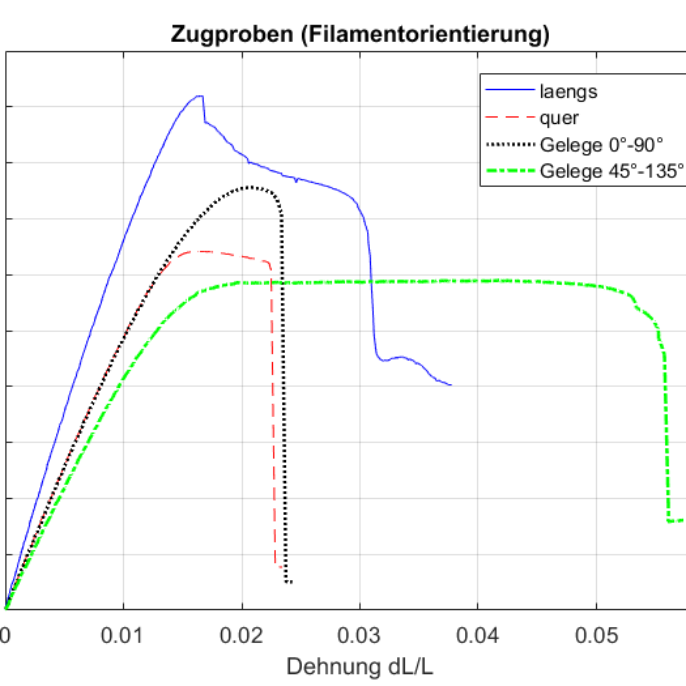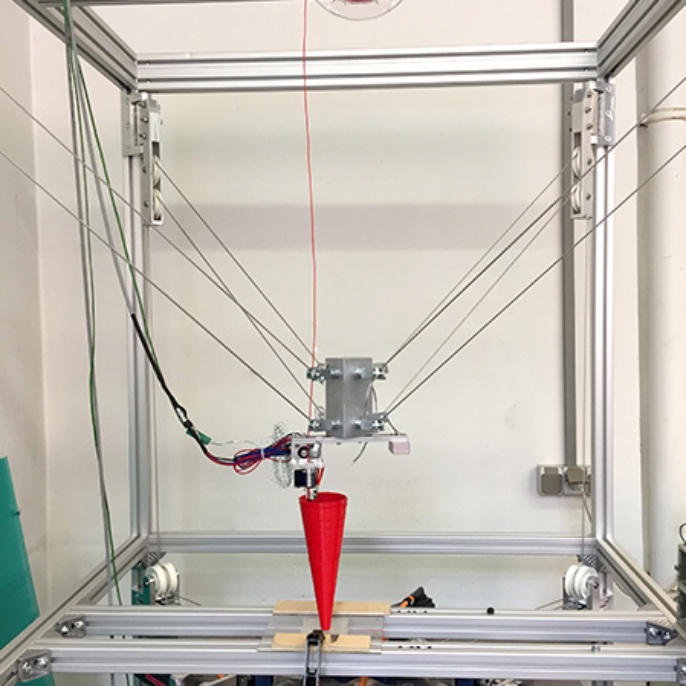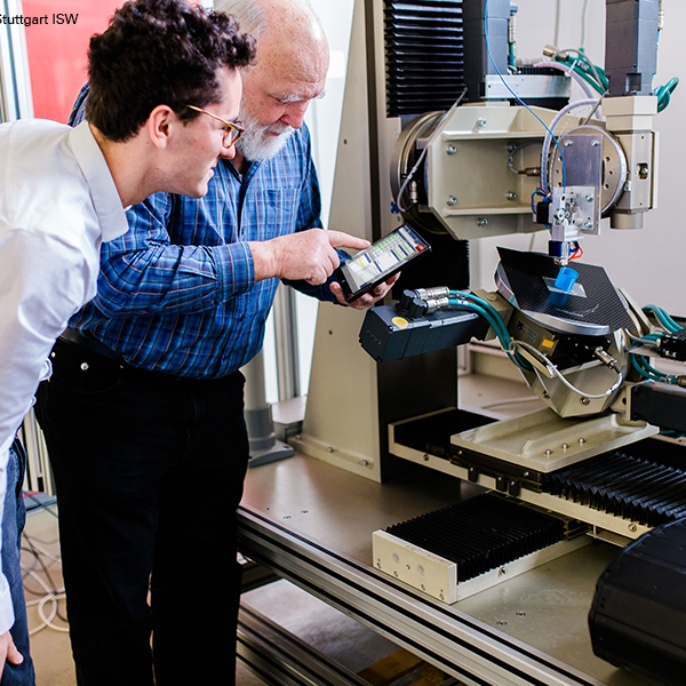Background
The research project "Biological Design and Integrative Structures" is dedicated to the design and construction principles of biology and transfers them to architecture and building construction. At the Institute for Control Engineering of Machine Tools and Manufacturing Units (ISW) at the University of Stuttgart, the use of layer processes (additive manufacturing) in control and manufacturing combination with other processes, such as concrete spraying and pultrusion of fiber structures, is being investigated. In addition to general manufacturing processes of bio-inspired components, continuous screw shell growth serves as inspiration for the production of a building envelope.
Subject
Seit Jahrmillionen passen sich Lebewesen durch Mutation, Rekombination und Selektion (evolutionärer Algorithmus) an deren spezifische Aufgaben und Überlebensstrategie an. Abbildung 1 zeigt das Ergebnis eines solchen Anpassungsprozesses einer mechanischen Struktur am Beispiel eines Seeigels. Bei diesem Vorgang ist der effiziente Einsatz von natürlichen Rohstoffen ein signifikanter evolutionstechnischer Vorteil. Dabei entstehen Leichtbaustrukturen, wie sie in vielen biologischen Körpern vorhanden sind.
Das hier vorgestellte Projekt untersucht wie solche Strategien in technische Prozesse überführt werden können. The consortium of TRR141 "Biological Design and Integrative Structures" – Analysis, Simulation and Implementation in Architecture consists of 16 institutes of the Universities of Freiburg, Stuttgart and Tübingen, the Fraunhofer Institute for Building Physics and the State Museum of Natural History Stuttgart. Since the entire research project is a dialogue between the disciplines of biology, architecture and engineering, the functionally important features of the biological system are abstracted in a model that reflects the essential properties as well as the design principles. Here, the biological model is considered as a source of ideas for innovative structures in architecture. From the gained knowledge a systematics as well as a concrete illustration for the production of such structures is derived. This applies to a small biomimetic scale as well as to structural dimensions, which means that the manufacturing process has to be scaled up (see Figure 2).
In the course of the project, a specific case study will be used to investigate the transferability of snail shell growth to the printing of building shells. The free shaping of the periostracum occurring in the worm is realized as an additively manufactured membrane, which is reinforced with graded shotcrete as an analogy to the lime layer of the biological shell (see Figure 3). The continuous extrusion of a plastic shell in combination with the concrete spraying process and additional coating processes presents a challenge in terms of manufacturing feasibility and control engineering solutions.
The subproject "Fabrication of biomimetic and biologically inspired (modular) structures for use in the construction industry" (B04) deals with the general fabrication of such biomimetic and bioinspired (modular) structures for use in the construction industry.
The challenge in mapping biological models onto a built structure lies in transferring structure- and system-determining properties of biological materials into those of building-specific and as yet non-building-specific materials and manufacturing processes. To this end, components and manufacturing methods will first be investigated and verified on a small scale (model, unit cell), so that the findings can then be transferred to the manufacture of components on an architectural scale in further research stages. An important boundary condition for the further development of manufacturing methods is the fact that an economical production of complex component structures at a batch size of one should be guaranteed.
At ISW, the use of layered processes is being investigated as a representative of additive manufacturing processes, with the first step focusing on manufacturing by means of fused deposition modeling (FDM) (Figure 4). In general, the class of layer-based manufacturing processes is suitable for the construction of complex geometries and structures, for functional integration in components and thus for the generation of lightweight structures based on the model from biology.
The research content of innovative printing processes relates to the development of process-oriented kinematics, control technology and information technology. The focus of this research is the print head, which is regarded as a process engineering unit that delivers material in a targeted manner and thus produces components. The filament delivery system widely used in FDM is limited to discrete material properties per printhead. Print head systems with several extruders as individual material conveyors, mixers and compressors, which lead into a central extruder axis as well as into separate nozzle channels, represent a further development. This printhead configuration enables continuously variable material properties, including fiber-reinforced, through targeted control of the individual material and total material feeds. With this technology, components can be produced that are oriented or optimized throughout the volume to its loads. In addition, multi-material extrusion can be used to realize new types of pressure processes which, for example, produce dimensionally stable structures. Here, support areas within the material strand are created by special material selection and external exposure to UV lamps, which support the main material in the form of a bar structure. Thus, a large volume flow can significantly reduce printing times while maintaining dimensional stability.
Other institutes are conducting research on spraying and casting processes (ILEK) to produce the internal structuring of concrete components/elementary cells and pultrusion processes (ITFT) to produce spatial, fiber-reinforced, biomimetic structures. The advantageous properties of the different materials and manufacturing processes are combined to generate composite components. The goal is to develop hybrid manufacturing processes that can be applied in one and the same facility.
Since it is a basic principle of load-bearing, biological matter to carry out load transfer via matrix-bound fibers, the various macroscopic properties of building materials are achieved by the targeted incorporation of different fiber materials with a fiber orientation in the direction of the load. In this way, fiber-reinforced structures with graded component behavior are to be produced by means of both layer-based processes and spatial pultrusion, and their suitability is to be investigated.
Another characteristic of biological, especially mineral, organisms is the shaping by porous structures, which are realized by spray and casting processes of graded concrete and combinations with the FDM process.
In addition to the manufacturing engineering issue, it is worked out to what extent the biological phenomena, manufacturing techniques and material use have feedback effects on each other due to scale effects and whether these may have to be modified to ensure required properties and functions in the highly scaled state. The aim of this investigation is to optimize the printing process in terms of control technology and to scale up the manufacturing process for architectural use. The latter could be realized, for example, by integrating the print head into a rope kinematic system. In this way, the production of bio-inspired building parts or segments by means of additive manufacturing should become established in the construction of the future.
Get in touch

Colin Reiff
M.Sc.Research Assistant "Mechatronic Systems and Processes"





